Dedicated to Charles Spencer Chaplin, 1889-1977 ________________________________All images from Chaplin films made from 1918 onwards, Copyright © Roy Export S.A.S. Charles Chaplin and the Little Tramp are trademarks and/or service marks of Bubbles Inc. S.A. and/or Roy Export used with permission.
Don't wanna be here? Send us removal request.
Photo






Chaplin scenes that make me laugh 1/?
↳ Gold Rush (1925)
66 notes
·
View notes
Photo



What do we do, Charlie? Smile.
776 notes
·
View notes
Photo



“Modern Times” - 1936
Charlie Chaplin & Paulette Goddard
77 notes
·
View notes
Text
youtube
Sunnyside (1919) | Charlie Chaplin Short Film | Silent Comedy Classic
8 notes
·
View notes
Text
"Following its prestigious opening at Cannes Classics 2025, the newly restored 4K version of Charlie Chaplin’s The Gold Rush will return to cinemas worldwide on June 26 — exactly 100 years after its original premiere at the Egyptian Theatre in Los Angeles."
1 note
·
View note
Text
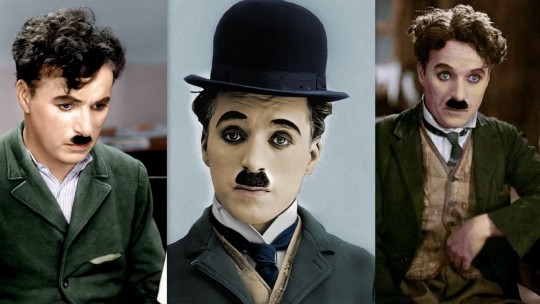
Charlie Chaplin often told this story:
- "When I was already famous, I came to London to attend the premiere of the film "The Gold Rush" in which I starred. At the same time, a competition was organized for my best look-alike. Used by a friend, I entered the competition incognito and took... third place!"
(photo: Pinterest)
4 notes
·
View notes
Text
Robert Downey Jr.’s performance in Chaplin (1992) is often regarded as one of the most astonishing transformations in film history. To embody the silent film legend, Downey spent months studying Chaplin’s movements, even training with a coach who had once worked with the man himself. He learned to use his left hand instead of his right, mastered Chaplin’s signature shuffle, and even performed many of the film’s physical comedy sequences without a stunt double. His dedication paid off—his mesmerizing performance earned him an Academy Award nomination and cemented his reputation as one of Hollywood’s most versatile actors.










"CHAPLIN" 1992
20 notes
·
View notes
Text
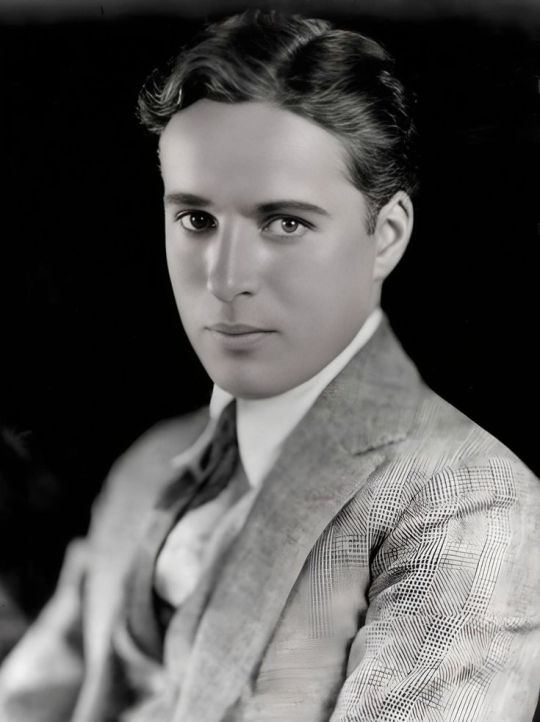
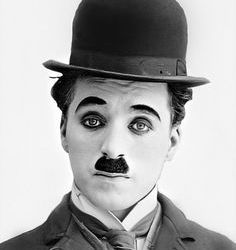

Very interesting article:
"Charlie Chaplin's silent film performances captivated audiences with their expressive power and emotional depth. His ability to convey complex emotions without words made him a legendary figure in cinema history. Chaplin's personality type is often classified as ENFP in the Myers-Briggs system and Enneagram Type 4, reflecting his creative, individualistic nature and deep emotional sensitivity.
Chaplin's silent expressiveness on screen was a reflection of his inner world and unique personality traits. His performances were characterized by physical comedy, subtle facial expressions, and an innate understanding of human nature. These qualities aligned closely with the characteristics of an ENFP personality type, known for their creativity, empathy, and ability to connect with others on an emotional level.
The study of Chaplin's personality through frameworks like MBTI, Enneagram, and DISC offers valuable insights into the mind of this cinematic genius. It provides a deeper understanding of how his personal traits influenced his art and contributed to his enduring legacy in the world of silent film." (X)
2 notes
·
View notes
Text
"Pay Day" (1922) - Charlie Chaplin


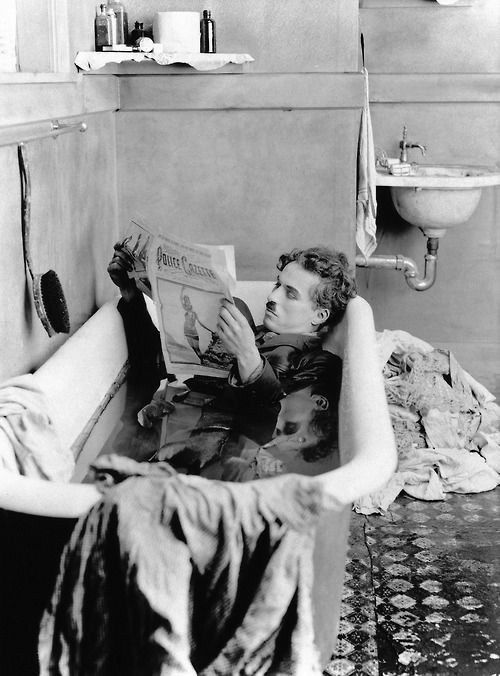



2 notes
·
View notes
Text


"The Hat Trick" - Charlie Chaplin (1931)
Photos: Edward Steichen.
"As Louis Delluc wrote, Chaplin “creates movement out of his sorrow,” he introduces it into the world of burlesque as a rejuvenating and motivating principle. This sadness undergoes metamorphosis, changes from object to tool of inquiry, and in this way transcends the space of pain.
Because of this playful engagement with pain, Chaplin took comedy extremely seriously, even claiming that it was “the most serious study in the world. There is no study in the art of acting that requires such an accurate and sympathetic knowledge of human nature as comedy work.”
18 notes
·
View notes
Text
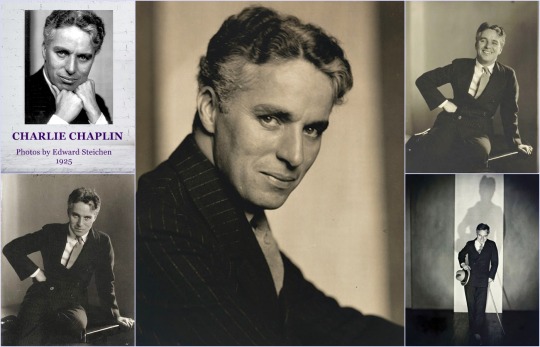
Charlie Chaplin in photographs by Edward Steichen, New York, 1925.
5 notes
·
View notes
Text
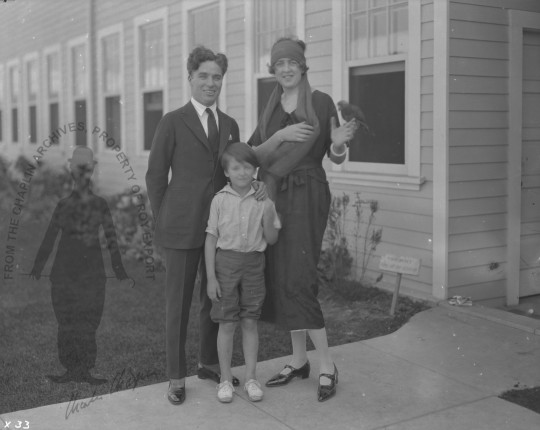

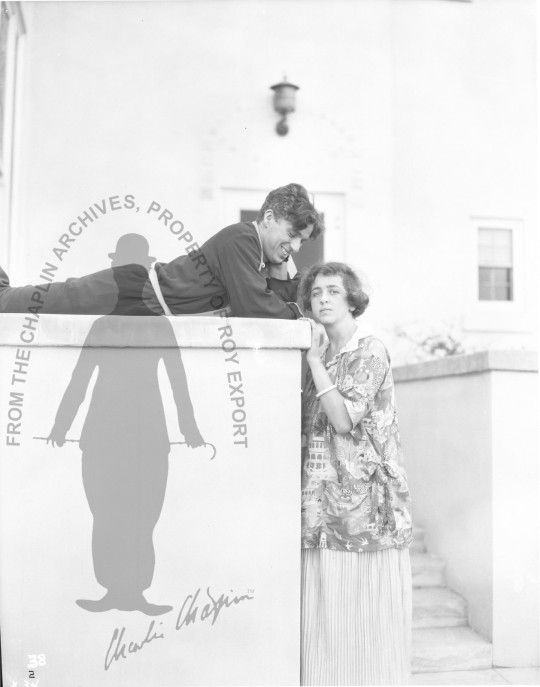
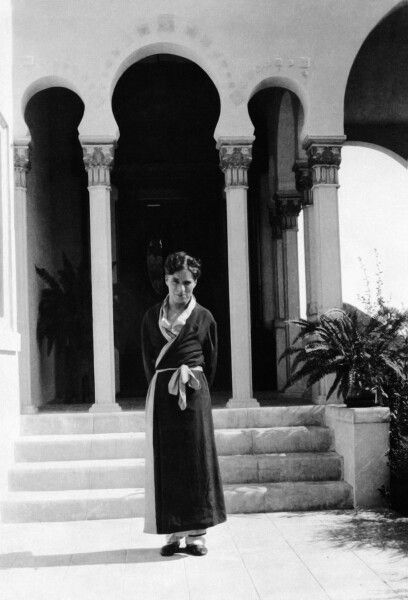

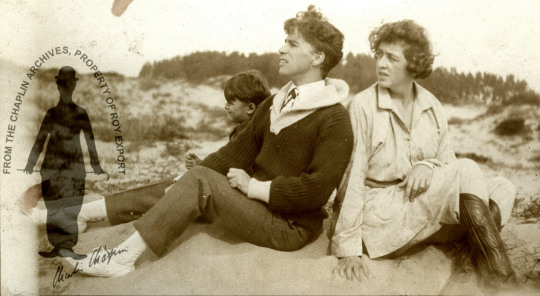

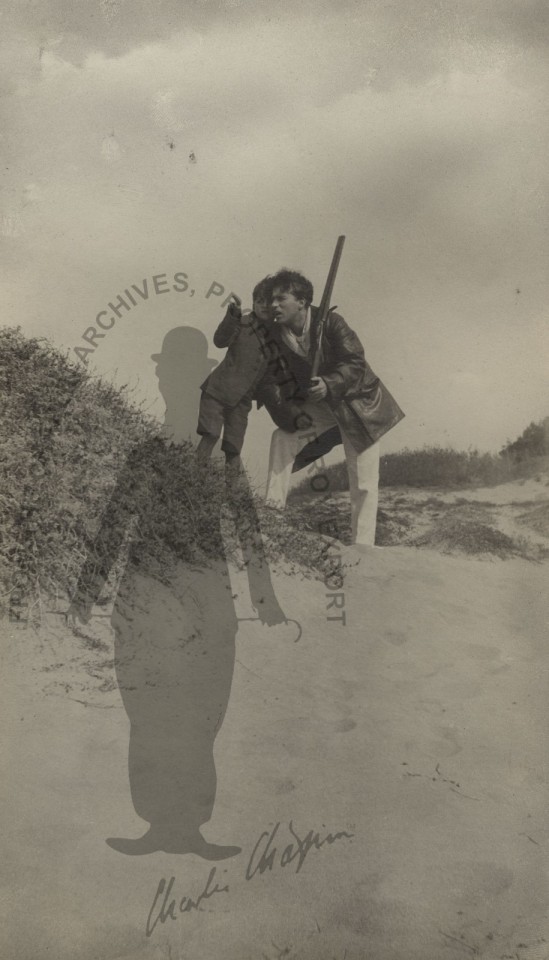
"MY AMERICAN DIARY" 1922
CLARE SHERIDAN
/fragment of text/
( ... )
"Saturday, November 5, 1921. Hollywood.
Three whole days I have worked on that bust, with a concentration of effort that is exhausting. It is finished—I feel tonight the elation of a girl out of school. Moreover I can sleep without the anxiety due to an unfinished work. Charlie is pleased, and I—well I am never satisfied, but I am conscious of having accomplished my best. His friends who know his restless and capricious nature are surprised that he gave me those three whole days. I was fortunate of course in meeting him immediately in his return, before he was re-engulfed in work. Moreover, with some perception, I planted myself with my materials in his house, and as I wanted him bare throated I begged him not to dress. A man in pajamas and dressing-gown does not suddenly get a notion to order his motor and go off to some place. I had him fairly anchored. Nevertheless he has been difficult to do. There is so much subtlety in the face, and sensitiveness, and all his varying personalities arrayed themselves before me, and had to be embodied into one interpretation.
Charlie would get down from the model stand and observe the progress through half closed eyes. Once he said: “I wish this was not me, so that I could admire it as I please. I find him very interesting, this fellow you have made!” and then, after a close examination from all angles he added:
“It might be the head of a criminal, mightn’t it—?” and proceeded to elaborate a sudden born theory that criminals and artists were psychologically akin. On reflection we all have a flame. A burning flame of impulse, a vision, a side tracked mind, a deep sense of unlawfulness."
Later, as I was finishing, the Comte de Limur arrived. He is a young Frenchman who is studying the moving picture work, for France. He looked at the bust, and then at Charlie, and then slyly at me: “I see, it is Pan ...” and added with a chuckle: “one can never deceive a woman!”
As I needed to work until quite late, it was fortunate that Charlie had changed his mind about Catalina. He heard yesterday that the fishing season closed there on November 1st.
On receipt of this news he flashed a new idea: summoning by shouts “To-om!” his secretary, he asked: “Can you get some tents? Can you get some tinned foods? Can you find a location suitable for camping—can we start on Sunday morning?”
The reply was in the affirmative, unhesitatingly. “Shall we take a chef, or do our own cooking?” Charlie looked at me, I informed him that I couldn’t boil an egg. “You ought to be ashamed of yourself. We’ll take a chef—” he said. And so my return to New York planned for Wednesday is again delayed.
Sunday, November 6, 1921.
We had planned to start in the morning at half past ten, but it was nearer half past twelve when we found ourselves en route, and Charlie had changed his mind. He said: “They found two locations for camp, one in the mountains, and one in the woods, but I have decided I want to go to the sea shore—we will go and look for a place ...”
“Then is no camp ready for us?” I asked in dismay. (Knowing something of the business of camping.) “Our tents are following us in a van,” he said and they surely followed.—What a “follow the leader game” for anything as cumbersome as a van! And a Ford followed us as well, containing the chef!
We stopped by the wayside for an ice-cream cone, and we lunched in a little town, where the proprietor addressed Charlie as “brother”—Charlie said it was quite habitual among the real Americans of that class. I said I thought it was very attractive as that one hardly needed a revolution to bring about comradeship, in a country where the waiter calls you “brother.” Charlie was rather scornful about the sentimentalism of my revolutionary ideals.
When we left the cafe, children had assembled in the streets and shouted “Goodbye Charlie” as we drove away. It was only his fondness for children that made him wave to them. Otherwise (I have observed) he has no desire to be recognized or lionized.
Who has ever seen an American country road on a Sunday, and not deplored the prosperity of the nation, especially within radius of Los Angeles? The road is like a smooth winding ribbon on which they race, they pursue, they overtake, the atmosphere is gas and dust, the surface is thick and oily. Any road that is a road at all is humming with the throb of machines. The only road that has no traffic in America is what is called a “dirt-road.” It isn’t “dirt” at all as we understand the word dirt in England. It is just Mother Earth, but these roads lead to nowhere, they end in a field on a farmhouse, as we discovered, and lost much time exploring and re-tracing. The macadam roads led down to the sea shore in places where crowds had gathered together to camp or picnic. That is peculiar about Americans, they love being together. I questioned Charlie: “Surely there must be lovely peaceful places unmarred by civilization?” and he said: “No—if there is a lovely place that is accessible, everyone will have found it....”
“Then,” I said, “we must content ourselves with a horrid place that nobody wants!”
The sun sank lower and Charlie’s spirit with it. He mopped his brow and shouted: “On—on—hurry!” to the chauffeur. It was a race with daylight. Would anyone have believed it was so difficult to get away from the world!
“You should do like the Mexican motors,” Dick said, “and go across country—”
In the distance we saw a clump of trees that stood out from afar in a flat colorless country, and they were by the sea. Once again we plunged off the macadam road and pursued a sandy track for more miles. Little by little the world and the sounds of the world were left behind and we were alone. The road ended as usual, and we found a farm house and a notice:
“Private property.—No trespassing—no camping—no hunting—” and then the sun set.
Our feelings just for a moment were indescribable.
The place was perfect. It was everything we had dreamed, and more. The wood was of eucalyptus trees, and the smell of them mingled with the smell of the sea, and the evening air was still and fragrant. We sent a messenger to the land proprietor, asking permission to remain, and impending the answer we walked over the sand dunes to the sea shore. The sun had left a crimson and indigo reflection in the sky which colored the foam waves as they broke one upon another. Charlie was in ecstasies, he was breathlessly inarticulate in his appreciation, and we both followed his example, doubled ourselves up, and looked at the horizon upside down because as he said, one got a far stronger impression of it. When we got back to the wood we found that all was well. Charlie of course is Charlie and permission was granted to remain. In the dark five tents were pitched on the outskirts of the wood.
Late into the night I sat with him over the campfire. A half-moon rose and little veils of sea swept like gossamer over the dunes, and the naked shiny eucalyptus stems cast black shadows. Mingling with the night bird cries, the rhythmical sound of the sea on the shore.
One by one the lanterns in the camp flickered and went out. Charlie sat huddled up before the flame, an elfin, elemental creature with gleaming eyes and towsled hair. His little nervous hands raking the embers with a stick. His voice was very deep, the voice of a much bigger man. He ruminated moodily. He said it was “too much—too great—too beautiful—there are no words—”
Wednesday, November 9, 1921.
By the Sea—California.
We seem to have been divinely led to this most beautiful and secluded place. One can hardly believe it was mere chance. So near civilization we are, and yet no one passes this way. As far as the eye can see the curving beach belongs to the sea-birds. There is a fresh water lake full of preserved wild duck, and word has been sent by the proprietor that we may shoot, hunt, cut wood, and do whatever we like! We surely picked a good spot, and then the sand dunes! We discovered such a high one yesterday, and Dick took a header down it, as if he were diving. So we got no further on our walk, but lingered there and spent the entire afternoon scrambling up and sliding down head first. Charlie brought it to a fine art, he came down slowly with a rhythmical movement as if swimming; even sand sliding he does beautifully. Once we rolled down, and fetched up dazed and giddy at the bottom.
When the sunset sky became streaked pink and purple, Charlie kicked off his shoes, and danced with his beautiful small feet naked on the sand. He did imitations of Nijinsky and Pavlowa—he does it so well and with so much grace that one doesn’t know whether to laugh or silently appreciate.
The more I see of Charlie, and the more I know him, the more I appreciate him. He never does, says, or thinks an ugly thing. I have never met anyone like him. I find myself dominated by his intensity, and metaphorically sitting at his feet, accepting his judgment. He is so immensely bigger than the work he is engaged on. I believe that if he survives, he may in a few years take a very big place in international public life. We have discussed half jokingly the project of his standing for Parliament. I assured him no one would dare to contest him and that he would have a “walk-over.” I have heard him make impassioned speeches to imaginary crowds. He has harangued the sand dunes. Not only did he talk well but he talked sense, and his magnetism and vision recalled to my memory that leader of men: Trotzky. The only pity is that he is too emotional, he is almost consumed by the flame within him. This is, I suppose, inevitable in so great an artist. His intensity is terrific. Whatever he does he does it intensely. He is intensely funny, but he is intensely tragic too, he shoots with such intensity that when he lost a duck it nearly broke his heart. He puts the same spirit into the tunneling of sand bridges for Dick, or the story he invents about the wrecked ship on the beach. He is as intensely materialist as he is idealist. As intensely sincere and honest, and now because he wants to be sound on some new philosophical doctrine, he is studying mathematics with equal intensity. I can imagine that at night he must sleep with clenched fists and eyelids tight shut, and all the intensity of unconsciousness.
In moments of intense depression he exclaims: “I must get back to work—but I don’t feel like it. I don’t feel funny. Think—think of it: if I never could be funny again!”
It is his visit to England that has shattered him emotionally.
Friday, November 11, 1921. Los Angeles.
Yesterday evening when we started out on a walk, at dusk, a party appeared and waylaid us on our path, they had with them some children, to whom they wished,—they said—to show Charlie Chaplin.
It was a painful moment, he was shy and unprepared, the children gaped, conversation was halting.
This morning five motors full of children arrived, being the entire family, nephews and nieces of the landowner. The camp was disarrayed, we had planned our departure. Later two reporters appeared and undaunted by the fact that Charlie was not in camp they set out over the dunes in search of him.
I watched them walking back together, Charlie, head bowed the picture of dejection. His last morning had been spoiled, the beauty and peace, so hard to attain, seemed to have been a little tarnished. We left hurriedly, leaving the reporters in possession of the cherished spot that we had not time to look at lingeringly.
“It was time we left—” he said, and I visualised to myself, Charlie hunted, flying from pursuers, lost to view for perhaps 4 days, maybe 5, then discovered, and fleeing again “ad infinitem.” For him no peace. When at the end of a 70 mile drive we reached his house he ordered tea. We sat in chairs by an electric lamp, and tried to talk. We found ourselves making conversation to one another with difficulty. He looked at me as strangely as I looked at him, and then he said:
“You know what’s the matter—We don’t know each other.”
And it was true. I was talking not with the elemental wild-haired Charlie of the campfire, nor yet with Charlie Chaplin of the films, but with a neatly dressed, smooth-haired sophisticated young man I didn’t even know by sight. Civilization and its trappings have changed us both. The past seemed tinged with unreality.
The next day (Nov. 12, 1921) we said goodbye to the sunshine, the orange trees, the avenues of date palms and took the “sunset route” for New York. Charlie came to see us off, and was allowed past the barrier onto the departure platform, a privilege which made him conspicuous. Later, the conductor took Dick aside and asked him if he was Jackie Coogan’s brother! Four whole days and nights we travelled over this endless and tremendous country. Dick said he wished the train were a Mexican train, and I knew what he meant. In Mexico the monotony would have been relieved by an occasional good breakdown, which would have enabled us to bathe in wayside ponds and rivers, or explore woods. But the “Sunset Express” went on and on, day after day, hardly ever stopping. Little by little the dust of the desert and the sunshine of California gave way to greyness and cold, until suddenly one morning we found ourselves in Chicago."
( ... )
#charlie chaplin#charles chaplin#clare sheridan#richard “dick” sheridan#“MY AMERICAN DIARY” 1922#hollywood history
3 notes
·
View notes
Text

The photo shows 14-year-old Charlie Chaplin in the film "Sherlock Holmes", where he played the role of an errand boy named Billy. In this film, young Charlie played from July 1903 to June 1904.
The main role was played by William Hooker Gillette (July 24, 1853 - April 29, 1937), who was also a writer. Gillette played the character of Sherlock Holmes on stage about 1,300 times.
4 notes
·
View notes
Text
"The Kid" 1921

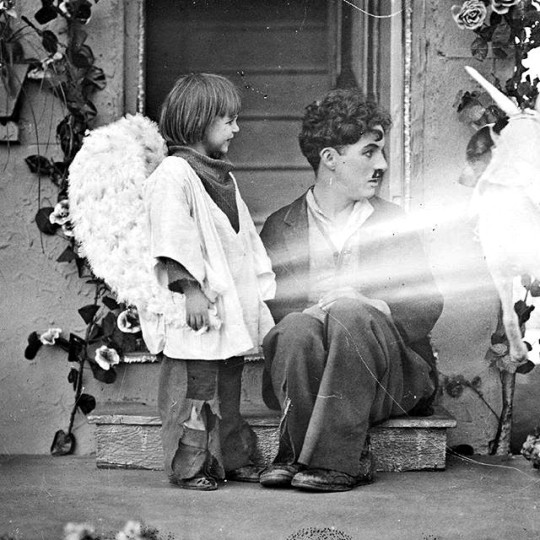
Of the many dream sequences he created throughout his filmography, this was one from "The Kid" one of if not his best. The boy and his father reunited.
A simple man’s vision of heaven.
In 1921 Charlie Chaplin went home to London after a 9 year absence. One of the people he met was J.M Barrie, the creator of “Peter Pan”
J.M. Barrie asked him the following question:
Why did you interpose a dream sequence in “The Kid”? It interrupted the flow of the story.“ Charlie answered - "Because I was influenced by a "A Kiss for Cinderella*,”. I answered frankly”
Charles Chaplin My Autobiography - page 269
*"A Kiss for Cinderella" was a play created by Barrie in 1916
13 notes
·
View notes
Text

Charlie Chaplin, New York, 1927. Apeda Photo Studio.
14 notes
·
View notes
Text
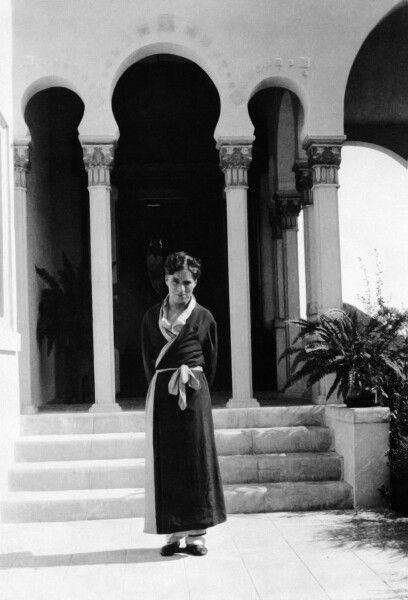
Charlie Chaplin lived in this Moorish mansion, called Moorcrest,
located at 6147 Temple Drive in Beachwood Canyon in the 1920s.
It is a home with an interesting pedigree.








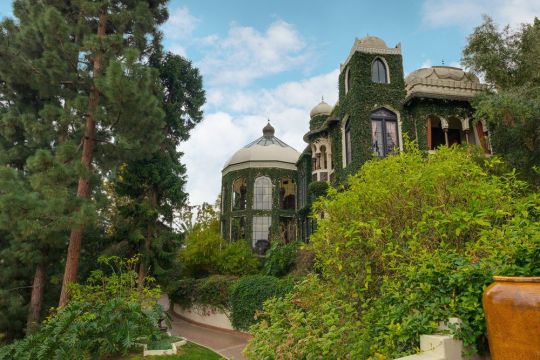


Moorcrest Mansion in Hollywood Hills completed in 1921, often referred as "Charlie Chaplin House", was also the house of american actress Mary Astor.
In 1925, Astor's parents bought a Moorish style mansion with 1 acre (4,000 m2) of land known as "Moorcrest" in the hills above Hollywood. The Langhankes not only lived lavishly off of Astor's earnings, but kept her a virtual prisoner inside Moorcrest. Moorcrest is known not only for its ornate style, but its place as the most lavish residence associated with the Krotona Colony, a utopian society founded by the Theosophical Society in 1912. Built by Marie Russak Hotchener, a Theosophist who had no formal architectural training, the house combines Moorish and Mission Revival styles and contains such Arts and Crafts features as art-glass windows (whose red lotus design Astor called "unfortunate"), and Batchelder tiles. Moorcrest, which has since undergone a multimillion-dollar renovation, remains standing. Before the Langhankes bought it, it was rented by Charlie Chaplin, whose tenure is memorialized by an art glass window featuring the Little Tramp.
194 notes
·
View notes
